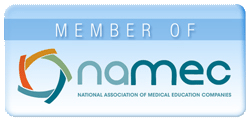On Target with Pain Management: Leveraging Change for Positive Outcomes
Adaptive Learning
Premiere Date: Monday, March 14, 2022This activity offers CE credit for:
- ABIM (MOC)
- Medicine (accme)
- Nursing (ANCC)
- Pharmacy (acpe)
- Dentists (ADA CERP)
- PA (aapa)
- Other
All other clinicians will receive a Certificate of Attendance stating this activity was certified for AMA PRA Category 1 Credit™
Credit Expiration Date:
Tuesday, March 14, 2023
Note: Credit Is No Longer Available
 | Steven P. Stanos, DO (Moderator) Executive Medical Director, Rehabilitation and Performance Medicine Swedish Pain Services Swedish Health System Seattle, WA |
 | David T. O'Gurek, MD, FAAFP Associate Professor & Interim Chair Department of Family & Community Medicine Director, Urban Community Health Center for Urban Bioethics Lewis Katz School of Medicine at Temple University Medical Director, TRUST Clinic Temple Health Philadelphia, PA |
In a 2018 report from the National Institute of Drug Abuse (NIDA), opioid-involved overdose deaths per 100,000 persons were among the highest in West Virginia, Maryland, New Hampshire, Ohio, Pennsylvania, Kentucky, Delaware, and Maine. Additionally, opioid prescriptions per 100 persons were also among the highest in these states, indicating a remaining need for education on appropriate pain management practices, as well as harm reduction with medication for opioid use disorder (MOUD) and access to naloxone. While overall progress has been made in reducing the overall number of opioid prescriptions, overdose deaths have not fallen proportionally, indicating that clinicians treating patients with pain require additional education about pain mechanisms, assessment, safe and effective treatment strategies for pain management, and screening tools for addiction risk.
At the conclusion of this REMS Adaptive OnDemand experience learners will understand the underlying mechanisms of pain and leave equipped with strategies for optimizing safe and competent prescribing as well as tools for how to best identify risk factors of opioid use disorder (OUD) and engage patients with OUD in treatment. Additionally, the activity will provide learners with strategies for engaging their patients in education about their own pain to develop safe and effective, multimodal treatment plans.
At the end of this CE activity, participants should be able to:
- Apply knowledge of acute and chronic pain pathways and underlying mechanisms to clinical assessment and appropriate management of pain.
- Upon evaluation of your current clinical workflow for opioid prescribing, incorporate two best practice strategies to optimize safe and competent prescribing and minimize potential for abuse and diversion.
- Educate patients about their pain to optimize safe and effective, multimodal treatment plans.
- Identify risk factors and clinical presentation of opioid use disorder (OUD) in patients prescribed opioids for acute and chronic pain.
This activity is supported by an independent educational grant from the Opioid Analgesic REMS Program Companies. Please see https://www.opioidanalgesicrems.com/Resources/Docs/List_of_RPC_Companies.pdf for a listing of REMS Program Companies. This activity is intended to be fully compliant with the Opioid Analgesic REMS education requirements issued by the US Food and Drug Administration (FDA).
Physicians, dentists, PAs, nurse practitioners, nurses, and pharmacists
ABIM MOC Credit:
Successful completion of this CME activity, which includes participation in the evaluation component, enables the participant to earn up to 1 medical knowledge MOC points in the American Board of Internal Medicine's (ABIM) Maintenance of Certification (MOC) program. Participants will earn MOC points equivalent to the amount of CME credits claimed for the activity. It is the CME activity provider's responsibility to submit participant completion information to ACCME for the purpose of granting ABIM MOC credit.
Learning Formats:
Enduring
MIPS Improvement Activity: This activity counts towards MIPS Improvement Activity requirements under the Medicare Access and CHIP Reauthorization Act of 2015 (MACRA). Clinicians should submit their improvement activities by attestation via the CMS Quality Payment Program website.
Dr. Stanos reports the following financial relationships:
Consultant: Emergent BioSolutions Inc.; Hisamitsu Pharmaceutical Co., Inc.; and Vertex Pharmaceuticals Incorporated
Speakers Bureau: Emergent BioSolutions Inc.
Dr. O'Gurek reports no financial relationships.
The following Peer Reviewer and CME Outfitters staff reports no financial relationships:
Faculty of this CE activity may include discussions of products or devices that are not currently labeled for use by the FDA. The faculty have been informed of their responsibility to disclose to the audience if they will be discussing off-label or investigational uses (any uses not approved by the FDA) of products or devices.
Questions about this activity? Call us at 877.CME.PROS (877.263.7767).
AL-001-031422-62



